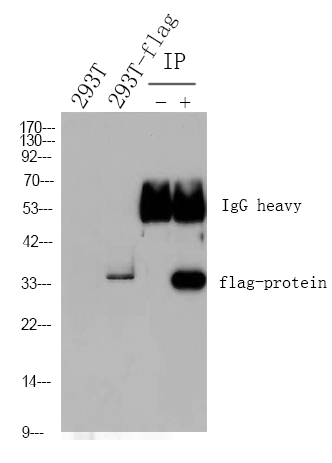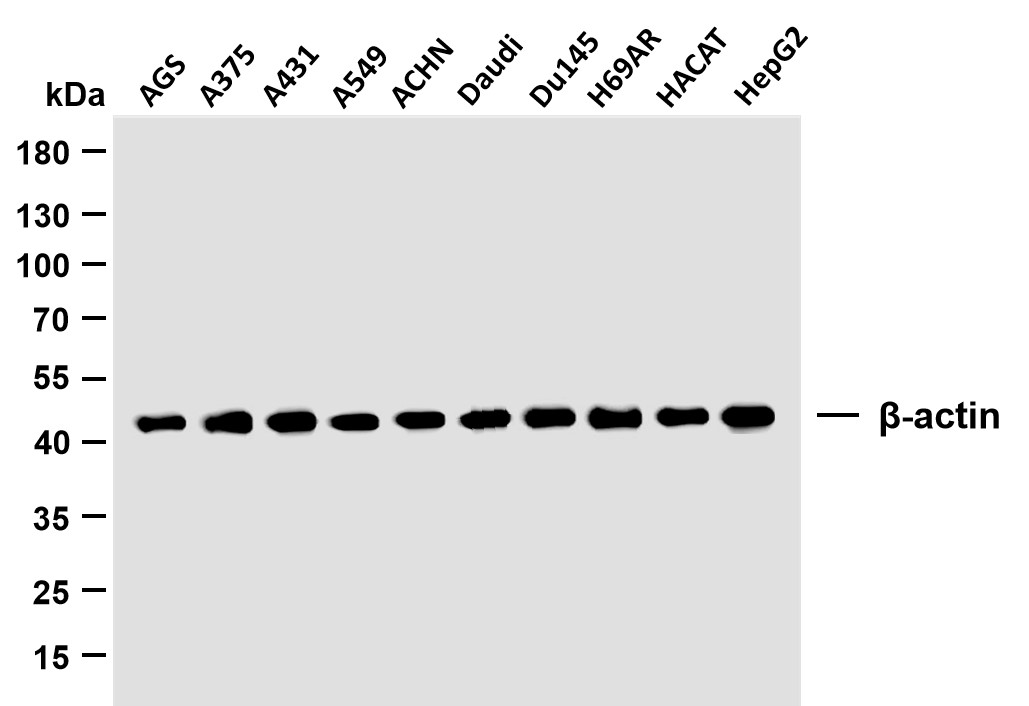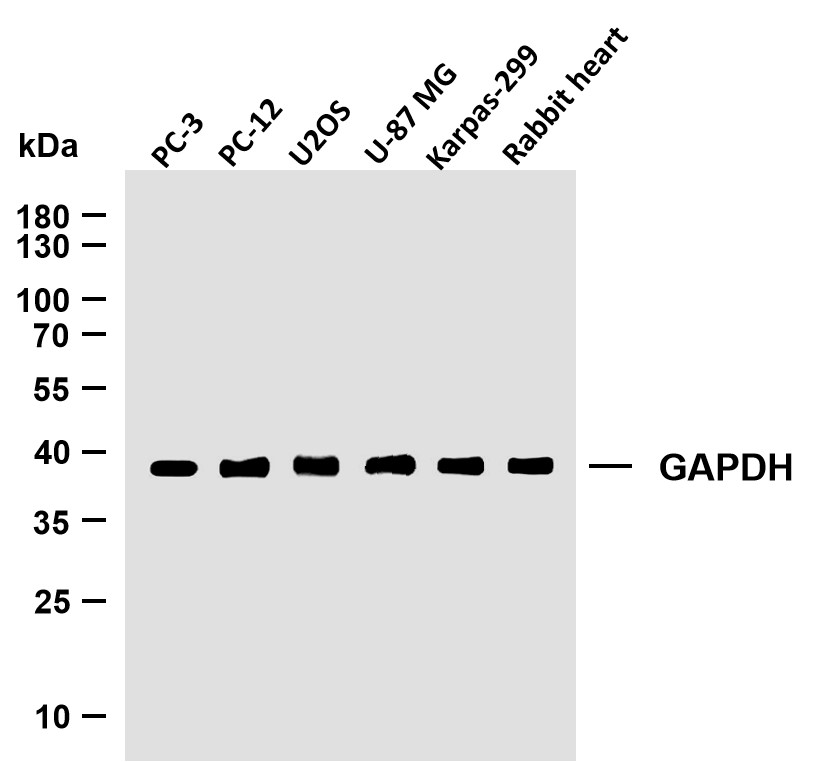
Catalog: YM0016
Size
Price
Status
Qty.
200μL
$600.00
3 weeks
0
100μL
$350.00
3 weeks
0
50μL
$210.00
3 weeks
0
Add to cart


Collected


Collect
Main Information
Target
AGT
Host Species
Mouse
Reactivity
Human
Applications
WB, ELISA
MW
52kD (Calculated)
Conjugate/Modification
Unmodified
Detailed Information
Recommended Dilution Ratio
WB 1:500-1:2000; ELISA 1:10000; Not yet tested in other applications.
Formulation
Liquid in PBS containing 50% glycerol, 0.5% BSA and 0.02% sodium azide.
Specificity
AGT Monoclonal Antibody detects endogenous levels of AGT protein.
Purification
Affinity purification
Storage
-15°C to -25°C/1 year(Do not lower than -25°C)
MW(Calculated)
52kD
Modification
Unmodified
Clonality
Monoclonal
Related Products
Antigen&Target Information
Immunogen:
Purified recombinant fragment of human AGT expressed in E. Coli.
show all
Specificity:
AGT Monoclonal Antibody detects endogenous levels of AGT protein.
show all
Gene Name:
AGT
show all
Protein Name:
Angiotensinogen
show all
Other Name:
AGT ;
SERPINA8 ;
Angiotensinogen ;
Serpin A8
SERPINA8 ;
Angiotensinogen ;
Serpin A8
show all
Background:
The protein encoded by this gene, pre-angiotensinogen or angiotensinogen precursor, is expressed in the liver and is cleaved by the enzyme renin in response to lowered blood pressure. The resulting product, angiotensin I, is then cleaved by angiotensin converting enzyme (ACE) to generate the physiologically active enzyme angiotensin II. The protein is involved in maintaining blood pressure and in the pathogenesis of essential hypertension and preeclampsia. Mutations in this gene are associated with susceptibility to essential hypertension, and can cause renal tubular dysgenesis, a severe disorder of renal tubular development. Defects in this gene have also been associated with non-familial structural atrial fibrillation, and inflammatory bowel disease. [provided by RefSeq, Jul 2008],
show all
Function:
Caution:It is uncertain whether Met-1 or Met-10 is the initiator.,Disease:Defects in AGT are a cause of renal tubular dysgenesis (RTD) [MIM:267430]. RTD is an autosomal recessive severe disorder of renal tubular development characterized by persistent fetal anuria and perinatal death, probably due to pulmonary hypoplasia from early-onset oligohydramnios (the Potter phenotype).,Disease:Defects in AGT are associated with susceptibility to essential hypertension [MIM:145500]. Hypertension also occurs in 5-7% of all pregnancies where it is a leading cause of maternal, fetal and neonatal morbidity and mortality. Among pregnancy-induced hypertension cases, severe pre-eclampsia [MIM:189800] is characterized by the development of hypertension and proteinuria after the 20th week of pregnancy and is the most distinctive, life-threatening form.,Function:Angiotensin-3 stimulates aldosterone release.,Function:In response to lowered blood pressure, the enzyme renin cleaves angiotensin-1, from angiotensinogen. ACE (angiotensin converting enzyme) then removes a dipeptide to yield the physiologically active peptide angiotensin-2, the most potent pressor substance known, which helps regulate volume and mineral balance of body fluids.,online information:Angiotensin entry,online information:The Singapore human mutation and polymorphism database,PTM:Beta-decarboxylation of Asp-34 in angiotensin-2, by mononuclear leukocytes produces alanine. The resulting peptide form, angiotensin-A, has the same affinity for the AT1 receptor as angiotensin-2, but a higher affinity for the AT2 receptor.,similarity:Belongs to the serpin family.,subunit:During pregnancy, exists as a disulfide-linked 2:2 heterotetramer with the proform of PRG2 and as a complex (probably a 2:2:2 heterohexamer) with pro-PRG2 and C3dg.,tissue specificity:Expressed by the liver and secreted in plasma.,
show all
Cellular Localization:
Secreted.
show all
Tissue Expression:
Expressed by the liver and secreted in plasma.
show all
Research Areas:
>>Phospholipase D signaling pathway ;
>>Neuroactive ligand-receptor interaction ;
>>Adrenergic signaling in cardiomyocytes ;
>>Vascular smooth muscle contraction ;
>>Renin-angiotensin system ;
>>Renin secretion ;
>>Aldosterone synthesis and secretion ;
>>Cortisol synthesis and secretion ;
>>Insulin resistance ;
>>AGE-RAGE signaling pathway in diabetic complications ;
>>Cushing syndrome ;
>>Pathways in cancer ;
>>Hypertrophic cardiomyopathy ;
>>Dilated cardiomyopathy ;
>>Diabetic cardiomyopathy
>>Neuroactive ligand-receptor interaction ;
>>Adrenergic signaling in cardiomyocytes ;
>>Vascular smooth muscle contraction ;
>>Renin-angiotensin system ;
>>Renin secretion ;
>>Aldosterone synthesis and secretion ;
>>Cortisol synthesis and secretion ;
>>Insulin resistance ;
>>AGE-RAGE signaling pathway in diabetic complications ;
>>Cushing syndrome ;
>>Pathways in cancer ;
>>Hypertrophic cardiomyopathy ;
>>Dilated cardiomyopathy ;
>>Diabetic cardiomyopathy
show all
Signaling Pathway
Organismal Systems >> Endocrine system >> Renin-angiotensin system
Organismal Systems >> Endocrine system >> Aldosterone synthesis and secretion
Organismal Systems >> Circulatory system >> Adrenergic signaling in cardiomyocytes
Organismal Systems >> Circulatory system >> Vascular smooth muscle contraction
Human Diseases >> Cancer: overview >> Pathways in cancer
Environmental Information Processing >> Signal transduction >> Phospholipase D signaling pathway
Reference Citation({{totalcount}})
Catalog: YM0016
Size
Price
Status
Qty.
200μL
$600.00
3 weeks
0
100μL
$350.00
3 weeks
0
50μL
$210.00
3 weeks
0
Add to cart


Collected


Collect
Recently Viewed Products
Clear allPRODUCTS
CUSTOMIZED
ABOUT US
Toggle night Mode
{{pinfoXq.title || ''}}
Catalog: {{pinfoXq.catalog || ''}}
Filter:
All
{{item.name}}
{{pinfo.title}}
-{{pinfo.catalog}}
Main Information
Target
{{pinfo.target}}
Reactivity
{{pinfo.react}}
Applications
{{pinfo.applicat}}
Conjugate/Modification
{{pinfo.coupling}}/{{pinfo.modific}}
MW (kDa)
{{pinfo.mwcalc}}
Host Species
{{pinfo.hostspec}}
Isotype
{{pinfo.isotype}}
Product {{index}}/{{pcount}}
Prev
Next
{{pvTitle}}
Scroll wheel zooms the picture
{{pvDescr}}


















